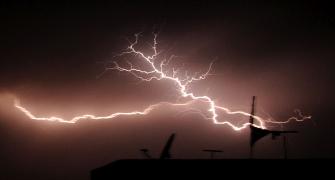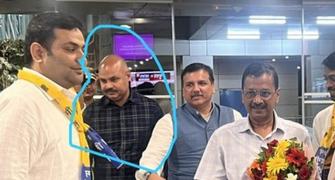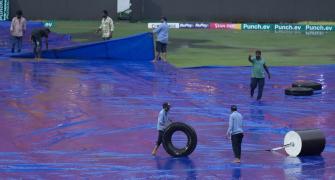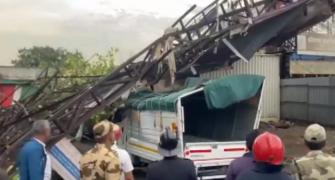
Defence Minister Manohar Parrikar has now stated production in India would be open for companies other than HAL
With Prime Minister Narendra Modi facing tough questions over the purchase of 36 Rafale fighters, announced on Friday during his visit to Paris, Defence Minister Manohar Parrikar, appeared on Monday on the state-run broadcaster, Doordarshan, to explain this move.
Parrikar was unable to clarify how many Rafales would eventually be bought or what price would be paid. Noting that there had only been an in-principle decision at the PM's level, he said, "We have not detailed its price and terms and conditions yet… the (Indian and French) teams will now sit and work out details."
"It may be worked out that we will buy another 90 Rafales… The 'Make in India' part will be decided only after government-to-government talks,” said Parrikar.
Contradicting himself later, Parrikar said India could not afford 126 Rafales.
"We must remember that Rafale is a top-end, multi-role fighter… but it is quite expensive. When you talk of 126 aircraft, it becomes a purchase of about Rs 90,000 crore," he said.
This is the first time an official has revealed how much Dassault was asking for 126 Rafales. Media speculation had favoured a figure of $15-18 billion. Parrikar's revelation of Rs 90,000 crore comes to about $15 billion.
Parrikar made the far-reaching announcement that, in addition to the Rafale, India could buy a second foreign fighter, in the lightweight category, to replace several MiG-21squadrons that will retire this decade.
"Rafale is not a replacement for MiG-21. LCA Tejas is a replacement for MiG-21. Or, if we build some other fighter under 'Make in India', that is also possible. If we build another single engine [fighter] in India, which is possible, that could be a replacement for the MiG-21", said Parrikar.
Indian Air Force planners do not favour buying two new types of fighters. Yet, Parrikar has thrown up a tantalising prospect for light fighter builders such as Lockheed Martin, which had offered the F-16IN Super Hornet to India, and Swedish company, Saab, which had offered the Gripen NG.
It has been widely speculated across the industry that Anil Ambani's Reliance Group was interested in building the Rafale, supplanting Hindustan Aeronautics Ltd. Parrikar has now stated production in India would be open for companies other than HAL.
"Initially, HAL would be preferred but that need not (remain the case). Since we've started a new file, we don't need to stick with the Request for Proposals, or tender conditions."
On Monday, Parrikar had scrapped the 2007 RfP for 126 MMRCA, which had mandated that HAL would build 108 fighters in India.
Intriguingly, the defence minister blamed the competitive procurement model that had been followed in the MMRCA tender for its eventual collapse.
Parrikar said, "It is wrong to do an MMRCA type deal using an RfP model. You cannot compare different types of aircraft like the F/A-18, Eurofighter and Rafale. All three have different strengths and capabilities. All three are probably good enough planes… One of them was made L-1 (lowest bidder). The entire procedure was completed and then we find that the entire procedure will have to be repeated all over again. How do I answer the air force?"
Parrikar also blamed the preceding United Progressive Alliance government for handling the MMRCA procurement poorly. In fact, it was the National Democratic Alliance government of the early 2000s that ordered competitive procurement.
More than once, Parrikar referred to the Rafale's capability for delivering weapons on deep-lying strategic targets -- his reference to a ‘strategic purchase’ apparently hinting at a nuclear delivery role.
"Rafale is a strategic purchase and should never have gone through an RfP. These important decisions need to be taken at government-to-government levels. Modiji took the decision; I back it", the defence minister said.
"The penetration capability of this aircraft (Rafale) is 1,000-1,100 kilometres. The other (IAF) aircraft penetration range is 300-450 kilometres. So, we get double the penetration," said Parrikar, again referring to deep strike capability.
In what would not be welcomed in the IAF, the defence minister stated he might compromise with the IAF's sanctioned squadron strength, instead accepting a lower figure. "Forty-two squadrons is the strength approved. We should have at least 37-38 very active squadrons", said Parrikar.









